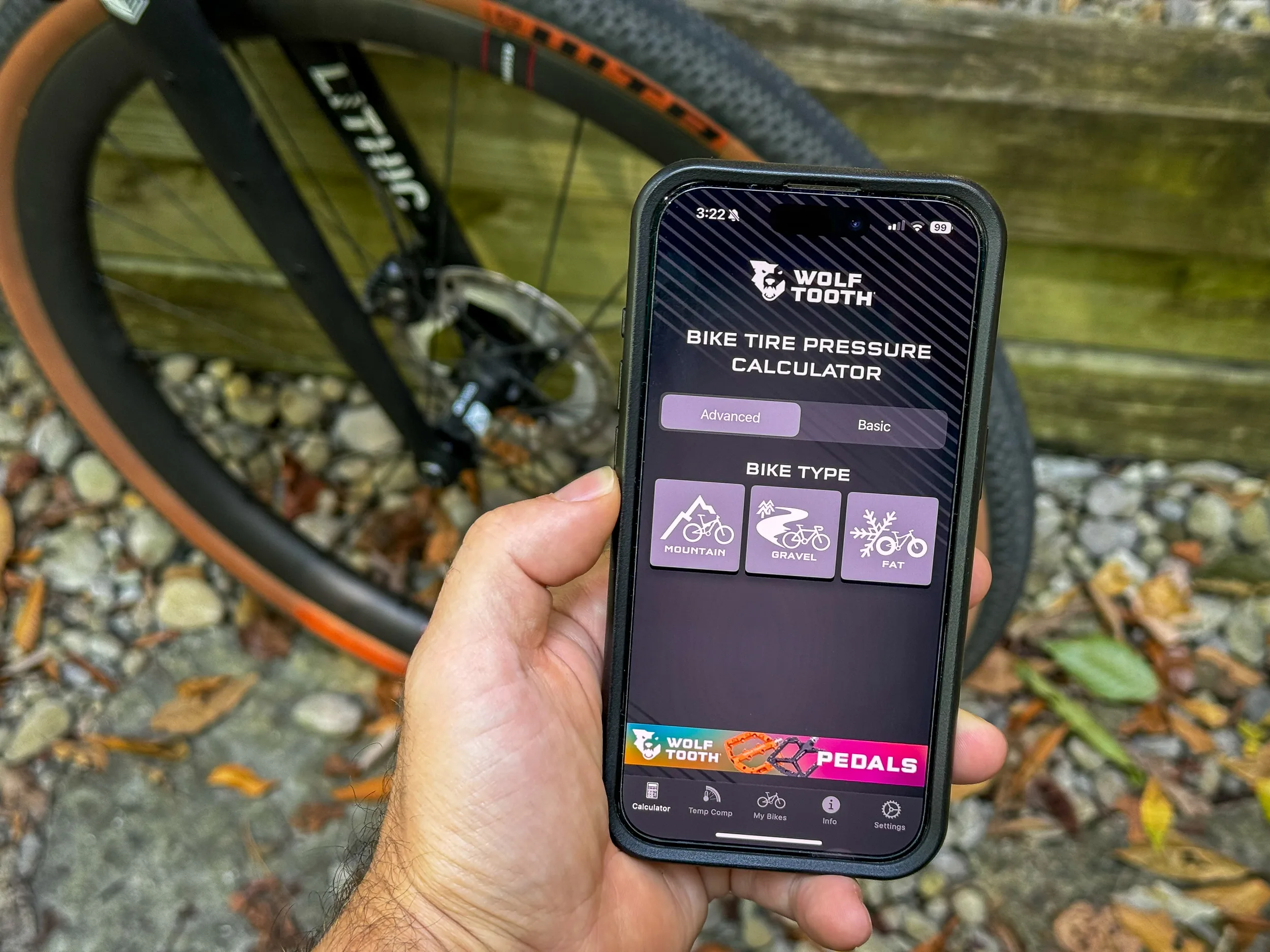Wolf Tooth Components has gone digital. Don’t worry. Their precision-machined parts aren’t going anywhere, but to help you get the most out of your ride, WTC just released their first app – the Bike Tire Pressure Calculator.
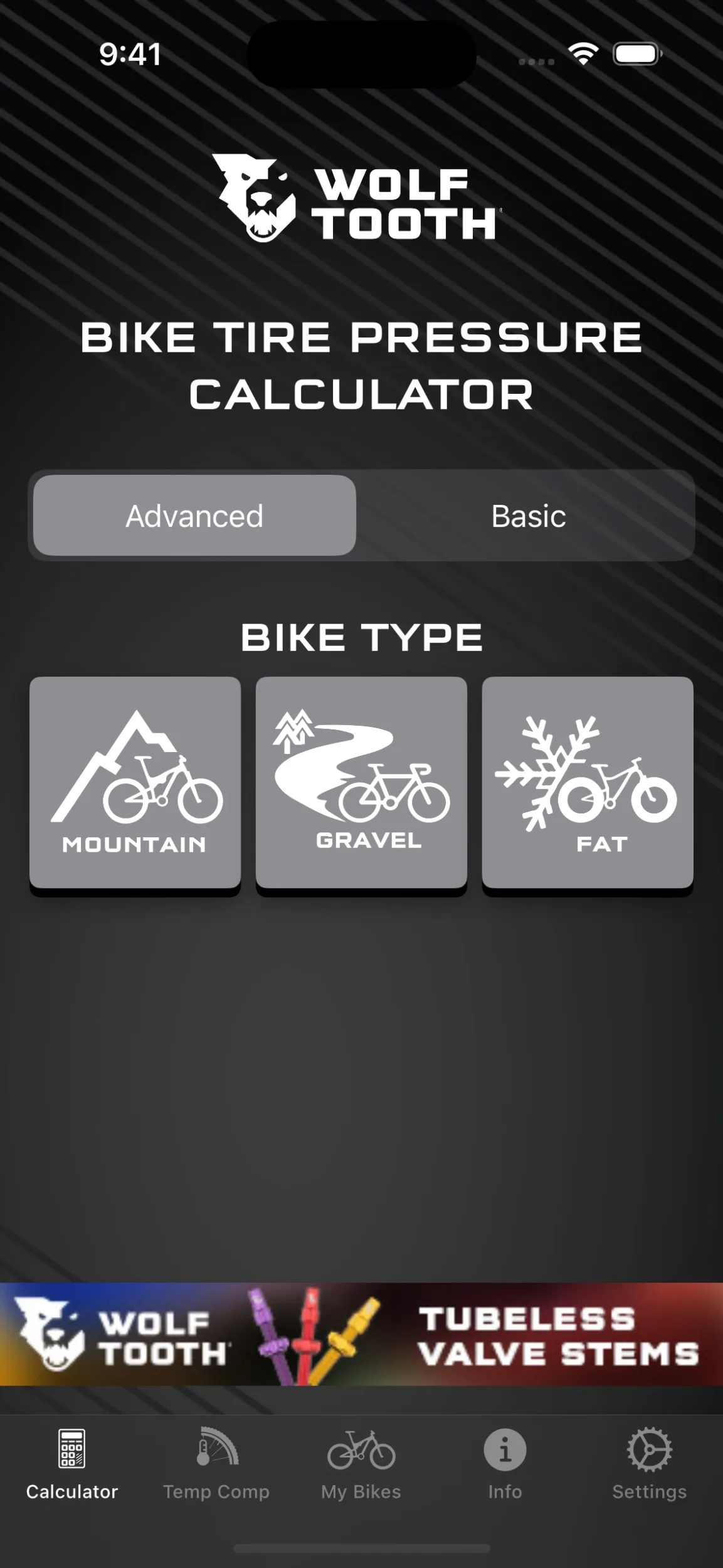
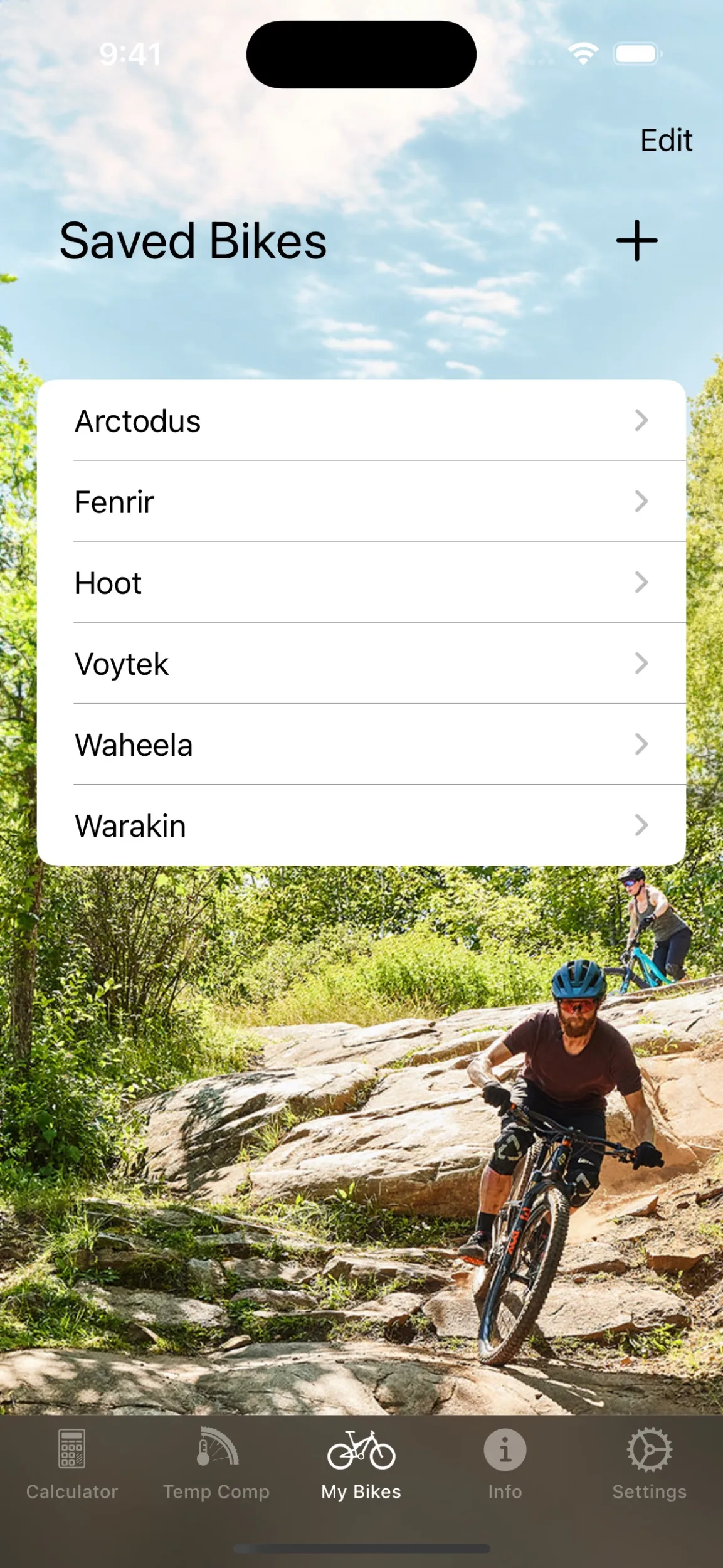
WTC is not the first company to release their own tire pressure app, but they wanted to address their own specific tire pressure needs. Specifically, fat bikes and bikes with wider tires. According to WTC, the calculator is based on the Wolf Tooth philosophy that lower pressures are better for performance, and “the lowest possible pressure consistent with terrain, riding style, and equipment is better”.
The WTC Bike Tire Pressure Calculator is available for free in the Apple App Store and Google Play, and starts with the option to choose from Advanced or Basic options. The Advanced setting gives you more input parameters to get a more precise pressure recommendation. Basic will get you off and running with half those inputs. Simply punch in each field and the app spits out precise front and rear pressure recommendations.
Advanced:
- Weight of Bike + Rider + Gear
- Tube/Tubeless/Inserts
- Casing Type
- Riding Conditions
- Inflation Temperature/Riding Temperature
- Tire/wheel Diameter
- Sidewall Tire Width
- Measured Tire Width
- Inflation Pressure
- Riding Pressure
Basic:
- Rider Weight
- Ebike
- Riding Conditions
- Sidewall Tire width
- Inflation Pressure
First Impressions
I’ve been using the WTC Bike Tire Pressure Calculator for about a month on gravel, mountain, and fat bikes. So far, the recommended pressures are almost exactly in line with what I would typically run – which is a good thing. I spend a lot of time riding and testing different tires, wheels, components, etc., and I’d like to think that I’m pretty good at choosing the right tire pressure by this point (and being able to feel the difference). One of the most critical parts to getting the right tire pressure is considering the entire weight of not just you, but your bike, water, gear, etc. Before your next ride, guess how much you weigh completely ready to ride with your bike and all gear/water/food, and jump on a scale. You might be surprised…
The one thing that the app has convinced me, is that I should be running my front tire pressure 1 or 2psi lower than I have been. I typically run 1 or 2psi lower in the front than the rear, but the app often suggested 2-4psi lower, which I now use.
But for those that don’t ride almost every day and have decades of experience dialing in tire pressures, the WTC app seems like it will give excellent advice on where to start. The app is also a handy way to store your pressure preferences for multiple bikes, or even the same bike with multiple tires. Note that you have to click on the ‘My Bikes’ tab first, then hit the ‘+’ to add a bike before calculating tire pressure to save it.
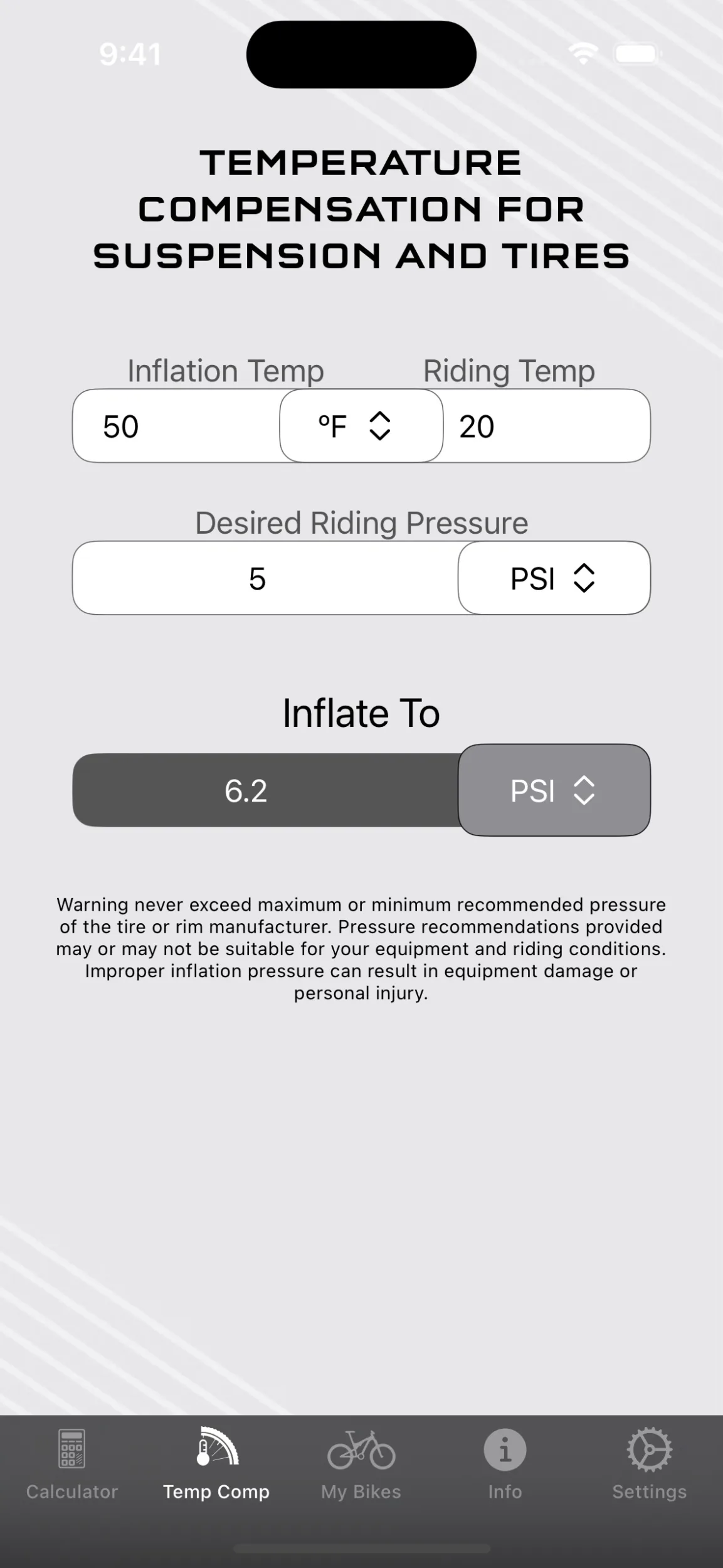
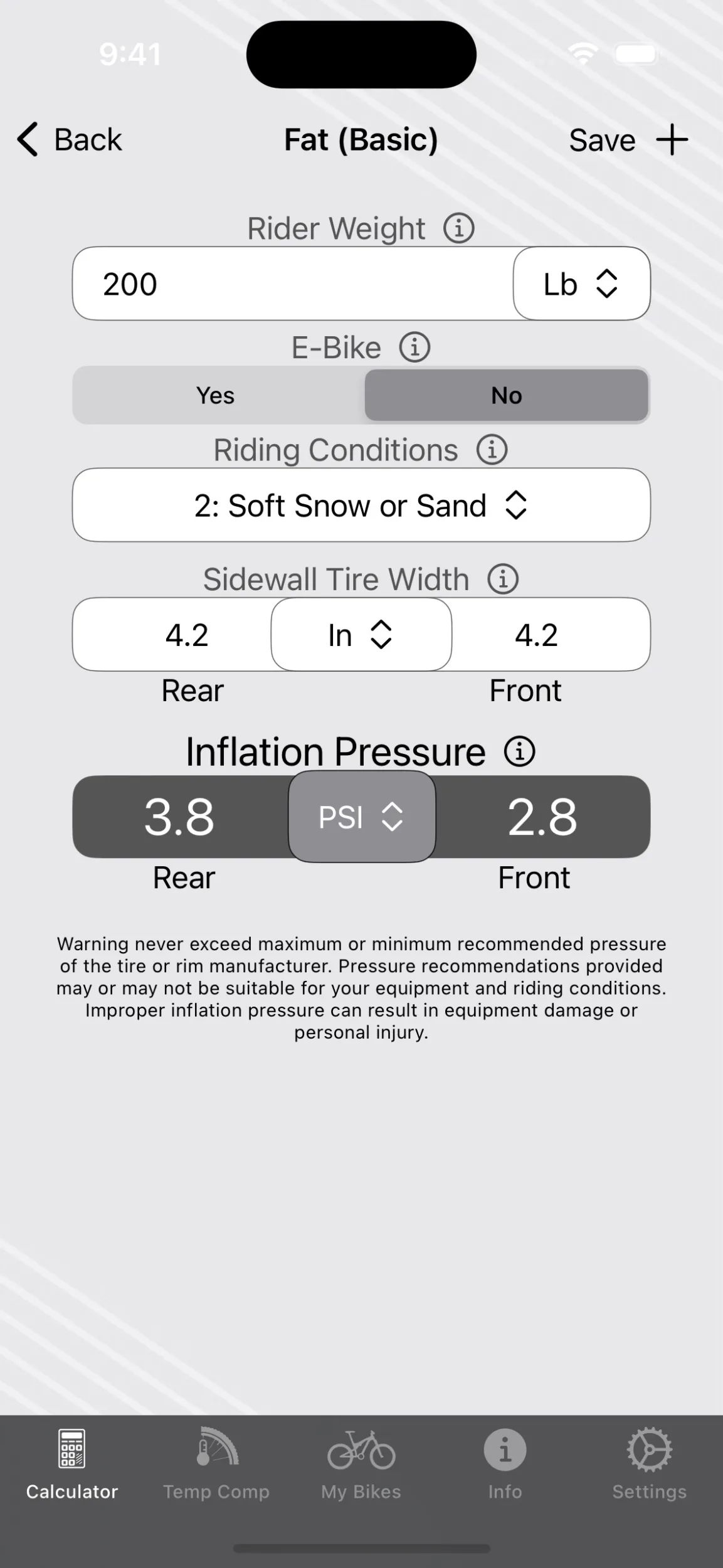
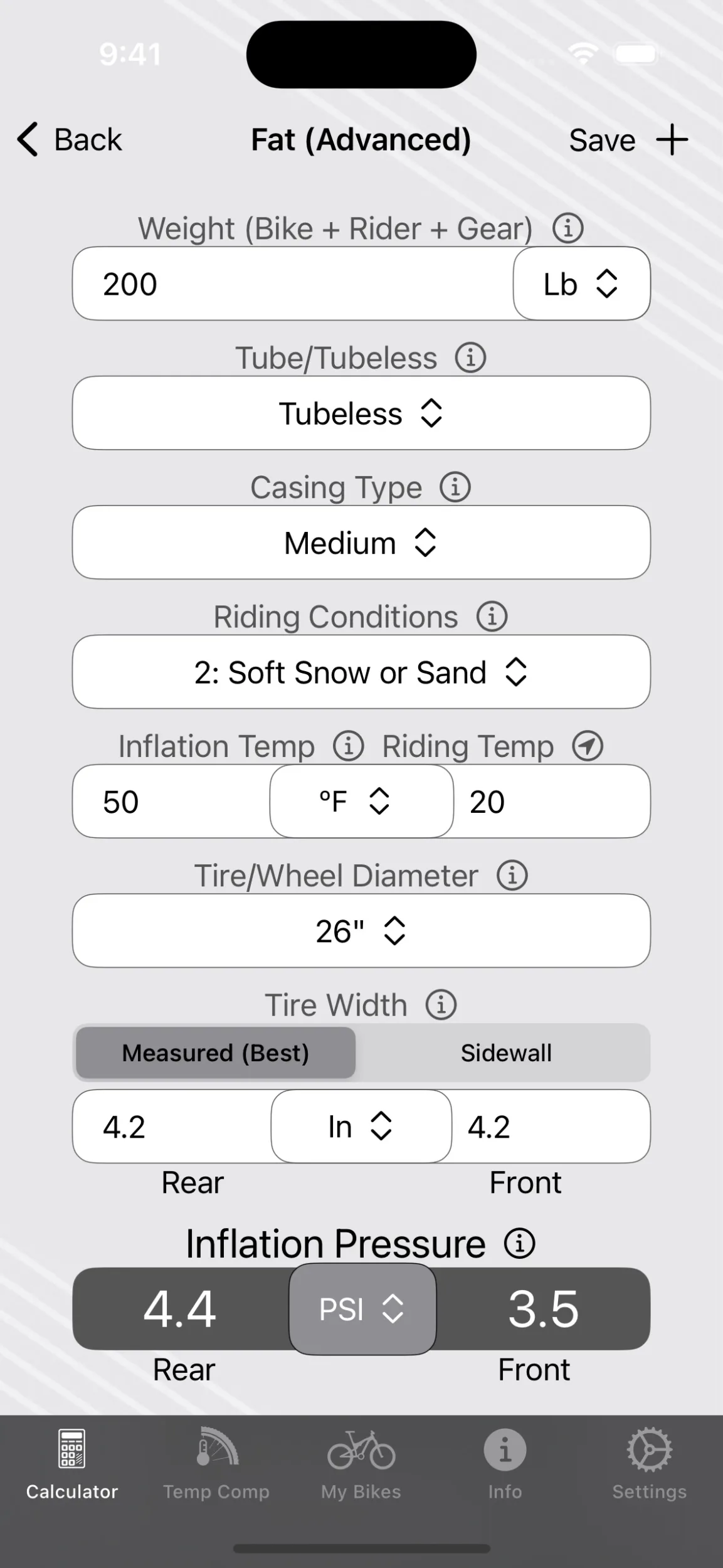
There’s also a Temperature Compensation calculator which isn’t that important when you’re riding a normal bike in the summer, but it becomes far more critical in the winter. If you’re filling a tire at 72ºF and you want your tire to 5psi once you’re outside in 0ºF weather, you have to inflate that tire to 8.1psi while inside. You can use the Compensation calculator alone, or it is integrated into the Advanced Pressure Calculator.
The app won’t work for everyone as there isn’t an option for road bikes with tires narrower than 30mm, and some wheel and tire sizes (like the new Surly 24 x 6.2″ fat bike tires) aren’t included. Also, it could use a few improvements like replacing invisible cursors to let you know what field you’re typing in. But like any app, it can be updated in the future. For a free app, it seems to work pretty well and is highly recommended if your riding buddies keep telling you your tires are way too hard…
